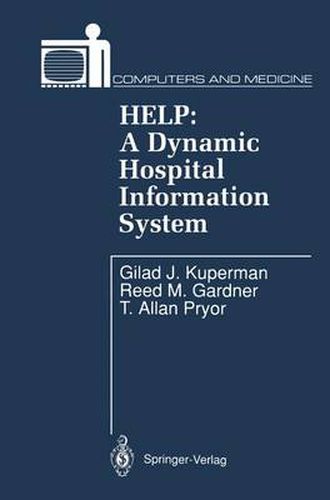Readings Newsletter
Become a Readings Member to make your shopping experience even easier.
Sign in or sign up for free!
You’re not far away from qualifying for FREE standard shipping within Australia
You’ve qualified for FREE standard shipping within Australia
The cart is loading…






This title is printed to order. This book may have been self-published. If so, we cannot guarantee the quality of the content. In the main most books will have gone through the editing process however some may not. We therefore suggest that you be aware of this before ordering this book. If in doubt check either the author or publisher’s details as we are unable to accept any returns unless they are faulty. Please contact us if you have any questions.
This monograph series is intended to provide medical information scien tists, health care administrators, health care providers, and computer sci ence professionals with successful examples and experiences of computer applications in health care settings. Through the exposition of these com puter applications, we attempt to show what is effective and efficient and hopefully provide some guidance on the acquisition or design of informa tion systems so that costly mistakes can be avoided. The health care industry is currently being pushed and pulled from all directions - from the clinical side to increase quality of care, from the busi ness side to improve financial stability, from the legal and regulatory sides to provide more detailed documentation, and, in a university environment, to provide more data for research and improved opportunities for educa tion. Medical information systems sit in the middle of all these demands. They are not only asked to provide more, better, and more timely informa tion but also to interact with and monitor the process of health care itself by providing clinical reminders, warnings about adverse drug interactions, alerts to questionable treatment, alarms for security breaches, mail mes sages, workload schedules, etc. Clearly, medical information systems are functionally very rich and demand quick response time and a high level of security. They can be classified as very complex systems and, from a devel oper’s perspective, as ‘risky’ systems.
$9.00 standard shipping within Australia
FREE standard shipping within Australia for orders over $100.00
Express & International shipping calculated at checkout
This title is printed to order. This book may have been self-published. If so, we cannot guarantee the quality of the content. In the main most books will have gone through the editing process however some may not. We therefore suggest that you be aware of this before ordering this book. If in doubt check either the author or publisher’s details as we are unable to accept any returns unless they are faulty. Please contact us if you have any questions.
This monograph series is intended to provide medical information scien tists, health care administrators, health care providers, and computer sci ence professionals with successful examples and experiences of computer applications in health care settings. Through the exposition of these com puter applications, we attempt to show what is effective and efficient and hopefully provide some guidance on the acquisition or design of informa tion systems so that costly mistakes can be avoided. The health care industry is currently being pushed and pulled from all directions - from the clinical side to increase quality of care, from the busi ness side to improve financial stability, from the legal and regulatory sides to provide more detailed documentation, and, in a university environment, to provide more data for research and improved opportunities for educa tion. Medical information systems sit in the middle of all these demands. They are not only asked to provide more, better, and more timely informa tion but also to interact with and monitor the process of health care itself by providing clinical reminders, warnings about adverse drug interactions, alerts to questionable treatment, alarms for security breaches, mail mes sages, workload schedules, etc. Clearly, medical information systems are functionally very rich and demand quick response time and a high level of security. They can be classified as very complex systems and, from a devel oper’s perspective, as ‘risky’ systems.